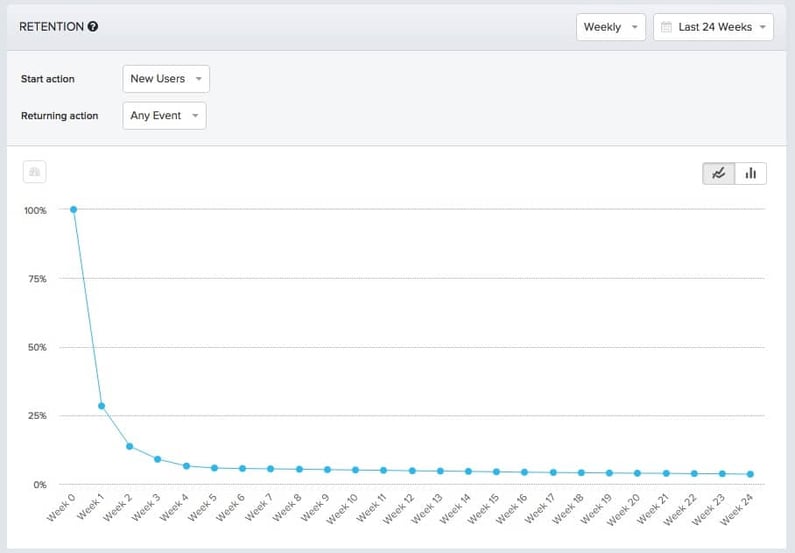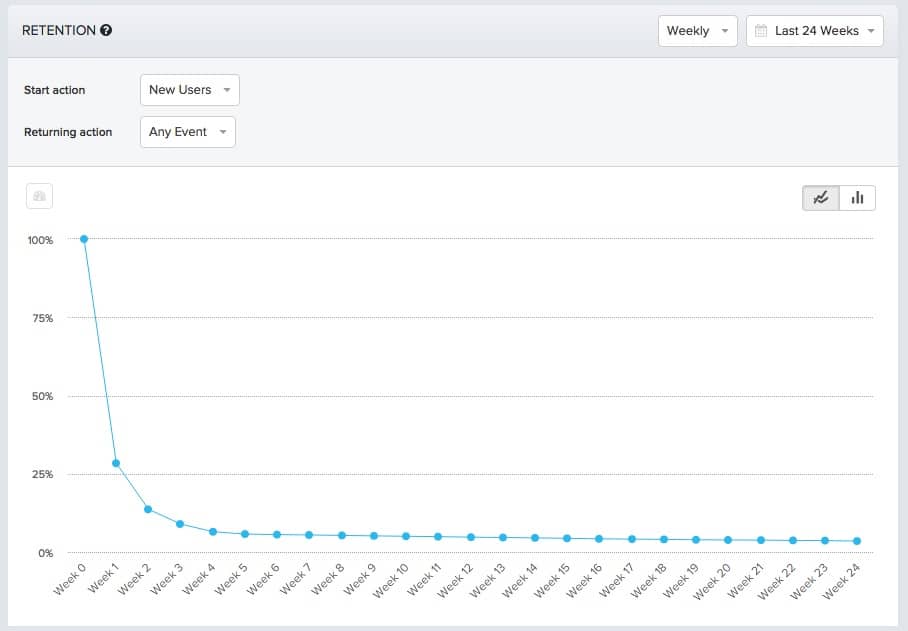Creating an accessible onboarding experience is a customer service power move right now. Especially considering that more people than ever are accessing digital platforms and self-service applications. People who would never opt for a digital solution under normal circumstances are being forced to adapt; including people with very little experience using mobile apps and digital services. A straightforward onboarding process determines the quality and longevity of your customer-company relationship and it’s essential to get it right for everybody. People who encounter a difficult or frustrating experience using your digital services might decide to never do business with your company again—online or otherwise.
This article will provide you with a complete overview of customer onboarding, as well as how to create an onboarding strategy and sequence.
What is Customer Onboarding?
HubSpot defines onboarding as the nurturing process that gets customers acquainted with your digital product or service. A customer-centric onboarding sequence typically includes step-by-step tutorials, limitless support services, and milestone celebrations when a customer achieves success using your product or solution. Great onboarding answers the key questions your customers have about your product or service before they even think to ask. The process is about more than just welcoming new customers, instead, it’s about showing them around, pointing out how the most important things work, and ensuring that they’re set up for success when the training wheels come off.
Why Should You Care About Customer Onboarding?
Onboarding sets the tone for a customer’s ongoing experience with your company. The reality is, you need to be proactive, helpful, and strategic about getting customers to use your platform again and again. User retention is easily one of the biggest challenges of any digital platform or mobile product, and part of the problem is many customers don’t understand the value and benefits of the platform quickly enough. For this reason, onboarding is the most important aspect of any customer journey.

AppCues provides a very compelling example conveying the importance of customer onboarding. The user retention chart pictured above depicts a discouraging trend many companies face. In this example, nearly 75 percent of users abandon the product in the first week. By the end of a one-month period, this product has only retained six percent of its initial user base. At the end of three months, only four out of 100 users are still using the product.
If you take a closer look at the retention curve above, you’ll notice that the customer churn flattens out at week 10, and from that point, the product is holding a steady retention rate of four percent. Even though it’s a low percentage, it proves the product does demonstrate value to a small group of people, which gives you a benchmark and direction; grow that four percent metric. While it’s tempting to focus on the user experience starting at week 10, the most influential factors determining where a retention curve plateaus is the product’s first impression at week zero, with customer onboarding. It turns out that when you perfect your customer onboarding experience, you’ll witness lift throughout your product’s entire retention curve. In other words, onboarding is essential for customer retention, and in turn, your business growth.
How to Create a Customer Onboarding Strategy
According to Tallyfy, an onboarding experience needs to answer two questions:
- Have you successfully introduced the new customer to your business and addressed all their questions and concerns as quickly as possible?
- Have you gathered enough information about the new customer to properly understand what products and services will benefit them directly?
You wouldn’t create a business campaign without first creating a strategy; otherwise, you run the risk of executing ineffectively. The same is true for customer onboarding. You need actionable goals and a plan before you create anything your customers will see.
You will continuously refine your strategy as you learn more about your customers’ needs and pain points, but an effective onboarding program needs to begin with a clear objective in mind. It’s essential that you keep your central objectives specific to your product, service, or platform, as well as your customer base. It’s also important to ensure your strategy covers these three retention requirements:
- Get customers to use your product, service, or platform more than once in the first week.
- Establish a pattern of usage.
- Make your product indispensable.
Let’s work through building a customer onboarding strategy step-by-step.
Step One: Understand Your Customers
To send the right message, you need to know what your customers want to hear. You should have a thorough understanding of your user or buyer personas before you start building a customer onboarding strategy. Make a point of understanding each unique obstacle, pain point, and challenge your customers face, as well as their ideal solutions and outcomes.
Customers bought your product or signed up for your service because they saw its promise. They learned from your website, a friend, or your product description that they could get value from your service. User onboarding is your time to fulfill that promise.
Customer onboarding falls short when the sequence is centered entirely on the product or service—the logistics, how-tos, and nitty-gritty details about features and functionalities. This is an easy trap to fall into, but an onboarding process should always be about the customer. Again, this starts with creating a seamless user experience focused on buyer personas and jobs-to-be-done, while simultaneously aligning the promise of your platform with the whole onboarding sequence.
- Buyer personas: Who is signing up for your product?
- Jobs-to-be-done: Why are they signing up for your product?
It’s imperative that you understand what success looks like for each of these jobs and people—why did they come to your product or service in the first place, and what are they trying to accomplish? Your customer onboarding sequence needs to be focalized on achieving that success.
Step Two: Set Clear Expectations
Your customers should always know what to expect from your product, service, or platform. Your company’s sales process should ideally highlight the qualifying factors for using the product. This practice needs to carry over into your customer onboarding sequence as you reiterate the value proposition that your product provides to your customers and prepare them for any potential setbacks. That way, when customers hit a snag, they are better prepared for it and know how to resolve the issue so they don’t give up on your platform quickly.
Step Three: Find Your Aha Moment
Beyond just describing the utility a customer gets from the platform, a customer needs to get a feel for it during onboarding. Samuel Hulick explains in Elements of User Onboarding, that you need to give customers “a small win that provides them with a positive outcome to their first excursion, and one that can be used as a springboard for future efforts.” In other words, an aha moment is tactical and it’s essential to help customers achieve their aha moment early in the onboarding process.
But, how do you pinpoint your product’s aha moment? There are two effective ways.
Talk to Your Customers
The best place to start is with your customers. Again, because the best onboarding experience is always customer-centric, you really want to get to know how your customers feel about your product or service. Regardless of how you decide to set up your research process, you want to get answers to these questions:
- What do you love most about our product?
- What feature(s) do you use the most?
- When did you decide you wanted to pay for this service?
- What competitors were you comparing us against?
It’s also beneficial to try to talk to customers who never fully adopted your platform and have churned. Why didn’t these people convert? You should try to answer that question the best you can. Did they fail to convert because the price was too high? Or perhaps their first experience was too confusing and they didn’t recognize the platform’s value proposition. Specifically, you want these people to answer these questions:
- What were you looking for when you signed up for this product?
- Why was our product not the right solution?
- What could we have done differently to keep you around?
After having several of these conversations, you will begin to identify patterns in a customer’s first experience using your platform, and more specifically, what aspects of your product drive the most conversions.
Work Backwards From Your Product Data
Developing an excellent onboarding experience involves identifying your ideal customer and then working backward to determine what actions they took early on. Once you’ve recorded those actions, you can map out the entire onboarding process. More importantly, you need to cross-examine your user interview research against actual data points.
Information from user interviews is extremely important, but it only paints half the picture. You need to validate these conversations with real customer data. A few important questions to answer are:
- How does each customer’s data differ from what they said in the interview?
- What onboarding steps do our well-adopted users share?
- Is there just one path to becoming a well-adopted user or are there several?
- What onboarding steps are our churned customers not reaching?
With the right data, you will be able to compare the experiences of your well-adopted users with users who have churned to identify several aha moments. What are the major differences in usage patterns? Did well-adopted users activate a particular feature during their first experience that churned users did not? Did well-adopted customers interact more with your support services? By conducting user interviews and working with actual data, you will answer all of these questions.
Step Four: Demonstrate Value
Before new customers can get excited about your product, you need to reemphasize its value proposition for their individual circumstances. Give your customers specific examples of how your product will address their pain points. You should include as much personalization as possible. A kickoff call, specialized training, or documentation are all valuable assets at this stage.
Step Five: Keep Communication Consistent
After your first welcome message, continue using email as a communication channel throughout the onboarding process to support any in-app tutorials or guides. At this stage, email is probably your customer’s most frequented communication medium. Once your product becomes indispensable, you can count on them to sign in on their own to view in-app messages.
Step Six: Create Customer-Centric Goals
Your customer’s goals and metrics will always be unique to their experience. Allow them to define their own success, then guide them to create measurable milestones to get there with benchmarks to hit along the way.
Step Seven: Measure Your Success
Onboarding benefits your customers and your business. Keep gathering customer feedback, proactively identify friction points, and track key metrics so you know what’s working and where you can improve.
Customer Onboarding Helps Grow Your Business
Customer onboarding doesn’t begin when someone purchases your product or service. Instead, it starts the very first time a prospect comes in contact with your brand. Every encounter is an opportunity to gather the information that will help you create an onboarding experience that converts. So it’s vitally important to build a seamless experience across all of your business’ touchpoints.
Take the time to align your marketing, sales, and service teams’ efforts and always keep the customer at the center of your efforts.

